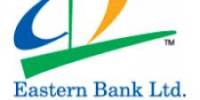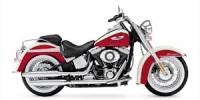Executive Summery_: BRAC Bank Limited is a scheduled commercial bank in Bangladesh. It established in Bangladesh under the Banking Companies Act, 1991 and incorporated as private limited company on May 20, 1999 under the Companies Act, 1994. Its operation started on July 4, 2001 with a vision to be the market leader through to providing all sorts’ support to people in term of promoting corporate, small entrepreneurs and individuals all over the Bangladesh. SME division of BRAC BANK LIMITED is one of the popular banking activities and it is getting popular everyday. As SME Loan is much profitable Business, so all financing institution and Banks are trying to get the market Share of SME loan so, the competition among banks and other institution is getting high. This report intends to describe the overall operation of SME sector of BRAC Bank Ltd and the communication gap between the supporting Desk officers to Front Desk Officers. I have found that CRO first find the potential clients and influence them for taking loan, and the supporting Desk officers do the most of the task, CRO always contact with the customers as well as the supporting desk officers. As CRO are the front desk officers and they represent the Bank so they have the ideas or thoughts of Clients on BRAC BANK LIMITED, They get their customer’s opinion. As CROs always have to contact with the customers and The Supporting Desk officers, so there may some communication gap arise. So the main purpose of report is to find out the problems, the CROs face at the time of their work and also their thought about their own organization, and also measuring the service quality that they get from their own organization and the Supporting Desk Officers. And I also tried to give some solution based on my findings for which BRAC Bank can avoid these problems and can operate their business more accurately and efficiently.
1.1 Introduction: Service quality is a single most important component for any business and financing arena. Good service quality receives immense adaptation to the Front Desk Officers. The most valuable natural resource of Bangladesh is its people. As a nation we struggled for our independence and now the attainment of economic uplift is the main goal. Micro lenders are working here in the financial field, providing very small amount and on the other hand regular commercial banks have been providing bigger amount of loans to larger industries and trading organizations. But the small and medium entrepreneurs were overlooked. This missing middle group is the small but striving entrepreneurs, who because of lack of fund cannot pursue their financial uplift, as they have no property to provide as equity to the commercial banks. With this end in view-BRAC Bank was opened to serve these small but hard working entrepreneurs with double bottom line vision. As a socially responsible bank, BRAC Bank wants to see the emancipation of grass-roots level to their economic height and also to make profit by serving the interest of missing middle groups. 50% of BBL total portfolio usually collected from urban areas is channeled to support these entrepreneurs who in future will become the potential strength of our economy. BBL is the market leaders in giving loans to Small and Medium Entrepreneurs. BBL has been doing it for the last five years, now it has provided more than TK 4500 crors to SME loan Borrower. SME division of BBL is one of the largest Department, and also a profit earning Department of BBL. CROs are the front desk officers who bring the clients, and also the supporting desk Officers help the CROs at their work and also help them to achieve their goals. While a loan in progress, The Supporting Desk Officers provide the internal service to the CRO, while providing the internal service to the CRO; some problem may arise, so the main aim of my report is to find out the Service quality from the Supporting Desk Officers to Front Desk officers (CRO)
1.2 Background of the study
Through this report an individual can expect to have a good knowledge about the service quality between the Supporting Desk Officers and Front Desk Officers (CRO). I have tried my level best to put more emphasis on the SME loan and the service quality level between the Front Desk Officers and the Supporting Desk Officers since it was the topic of my internship program. This report is to be used only for the academic purpose. I have collected all the necessary and relevant data from various primary, secondary and tertiary sources. After three months long hard labor, it has become possible for me to make the report comprehensive and factual. The data is truly and strictly confidential and no one can use its components in full or partial. I would like to give thanks to everyone who has helped and encouraged me in the process of preparing this report.
1.3 Objectives of the study
In this project, I will explore the relationship of different service with internal officers’ satisfaction of BBL. In particular, I will focus on, how BBL influences the direction to the Supporting Desk Officers as well as the front desk officers’ relationships. Such a study should give insights into the workings of BBL, the service quality provided to CROs.
1.4 Method
- Conduct a literature review on BBL and its internal Service
- Observe the organization six hours per week for four weeks
- Interview The CRO to clarify and provide insight into conversations
- Undertake a situational analysis of the field notes and interview notes
- Write a research report that combines my understanding of the relevant theory and previous research with the results of my empirical research
1.5 Limitations
Time constraints of the semester require less time than may be ideal for an ethnographic study. By being in the organization for only four hours a week for five weeks, there are bound to be aspects of observation and team communication that will not be revealed during my observations. Nondisclosure of information by management due to organizational confidentiality is the reason for unavailability of adequate relevant papers and documents.
2.1 Company Profile
BRAC Bank Limited, with institutional shareholdings by BRAC, International Finance Corporation (IFC) and Shorecap International, has been the fastest growing Bank from 2004 to 2007. The Bank operates under a “double bottom line” agenda where profit and social responsibility go hand in hand as it strives towards a poverty-free, enlightened Bangladesh.
A fully operational Commercial Bank, BRAC Bank focuses on pursuing unexplored market niches in the Small and Medium Enterprise Business, which hitherto has remained largely untapped within the country. In the last six years of operation, the Bank has disbursed over BDT 7500 crore in loans to nearly 200,000 small and medium entrepreneurs. The management of the Bank believes that this sector of the economy can contribute the most to the rapid generation of employment in Bangladesh. Since inception in July 2001, the Bank’s footprint has grown to 56 branches, 30 SME Service Centers, 427 SME unit offices and 112 ATM sites across the country, and the customer base has expanded to 465,000 deposit and 187,000 advance accounts till December 2008. In the years ahead BRAC Bank expects to introduce many more services and products as well as add a wider network of SME unit offices, Retail Branches and ATMs across the country.
2.2 Management Team
| Mr. A. E. A. Muhaimen Managing Director & CEO Mr. Syed Mahbubur Rahman Mr. Tarique A Bhuiyan Mr. Nabil Mustafizur Rahman Mr. Mohd. Rafat Ullah Khan Mr. Rais Uddin Ahmad Mr. Syed Faridul Islam Ms. Tahniyat Ahmed Karim | Mr. Mohammed Rahmat Pasha Head of Treasury & Financial Institutions Mr. Abedur Rahman Sikder Mr. Khwaja Shahriar Mr. Md. Sarwar Ahmed Mr. Shah Alam Bhuiyan Mr. Faruk Ahammad Mr. Firoz Ahmed Khan |
Figure 1: Management Team (Source: www.bracbank.com)
Board of Directors
| Mr. Muhammad A. (Rumee) Ali Chairman Mr. Quazi Md.Shariful Ala Director Mr. Mark A. Coffey (Nominated by ShoreCap International Limited) Director Ms. Tamara Hasan Abed Director | Mr. Shib Narayan Kairy Director Ms. Nihad Kabir Director (Independent) Dr. Hafiz G.A. Siddiqi Director Mr. A. E. A. Muhaimen Managing Director and CEO |
Figure 2: Board of Director (Source: www.bracbank.com)
2.3 Shareholding Structure
| Shareholders | Percent |
| BRAC | 31.74% |
| IFC | 9.50% |
| Shore Cap International | 8.76% |
| General Public through IPO | 40% |
| Non-Residents Bangladeshi’s | 5% |
| Mutual funds through IPO | 5% |
| Total | 100% |
Figure 3: Share holding Structure (Source: www.bracbank.com)

Figure 4: Share Holding Structure. (Source: www.brackbank.com)
2.4 Vision
BRAC Bank will be a unique organization in Bangladesh. It will be a knowledge-based organization where the BRAC Bank professionals will learn continuously from their customers and colleagues worldwide to add value. They will work as a team, stretch themselves, innovate and break barriers to serve customers and create customer loyalty through a value chain of responsive and professional service delivery. Continuous improvement, problem solution, excellence in service, business prudence, efficiency and adding value will be the operative words of the organization.
BRAC Bank will serve its customers with respect and will work very hard to instill a strong customer service culture throughout the bank. It will treat its employees with dignity and will build a company of highly qualified professionals who have integrity and believe in the Bank’s vision and who are committed to its success.
BRAC Bank will be a socially responsible institution that will not lend to businesses that have a detrimental impact on the environment and people.
2.5 Mission
BRAC Bank will adhere to highly professional and ethical business principles and internationally acceptable banking and accounting standards. Every BRAC Bank professional will need first of all a commitment to excellence in all that he/she does, a keen desire for success, a determination to excel and a drive to be the best do
2.6 Objectives
The objectives of BRAC Bank Limited are as follows:
- Building a strong customer focus and relationship based on integrity, superior service.
- To creating an honest, open and enabling environment
- To value and respect people and make decisions based on merit
- To strive for profit & sound growth
- To value the fact that they are a member of the BRAC family – committed to the creation of employment opportunities across Bangladesh.
- To work as a team to serve the best interest of our owners
- To relentless in pursuit of business innovation and improvement
- To base recognition and reward on performance
- To responsible, trustworthy and law-abiding in all that we do
- To mobilize the savings and channeling it out as loan or advance as the company approve.
- To establish, maintain, carry on, transact and undertake all kinds of investment and financial business including underwriting, managing and distributing the issue of stocks, debentures, and other securities.
- To finance the international trade both in import and export.
- To develop the standard of living of the limited income group by providing Consumer Credit.
- To finance the industry, trade and commerce in both the conventional way and by offering customer friendly credit service.
- To encourage the new entrepreneurs for investment and thus to develop the country’s industry sector and contribute to the economic development.
2.7 Organizational Flow

Figure 5: Organization Chart of BRAC BANK LIMITED
Source: My working place at BBL
3.1 SME Division of BBL
BRAC Bank’s investment in SME stands at BDT 10.70 billion and constitute 50% of the investment portfolio. The first and foremost mission of BRAC Bank is to maintain sustained growth in Small and Medium Enterprises Sector. Accordingly SME banking since its inception has been the engine of growth of BRAC Bank. The target group of its SME business is those of small and medium trading and manufacturing concerns, which require annual financing in the range of Tk. 3 to Tk. 30 lacs. 95% of SME loans at BRAC Bank are free from any collateral security and over 90% customers are first time borrower.
The special feature of SME handling in BRAC Bank is the simplified, easy and quick processing of appraisal, sanctioning and disbursement of loans at the doorsteps of the SME borrowers. It takes only seven days on collecting and receipt of loan proposal by the customers’ relation officers working at 382 unit offices to disbursement. On average 5000 loans are being disbursed amounting to Tk. 205 crores per month.
The recovery rate is 98%, which is also a cornerstone of its success in management of its overall portfolio. At present the bank offers 5 categories of customized products tailored to needs of SMEs, which are General trading, Medical and educational institutions, Supplier finance and Women entrepreneurs.
The success of this fast growth of SME financing with good recovery may be contributed mainly to the efforts of the committed officers having experiences in micro financing in BRAC and with, adequate training and appropriate monitoring and supervision.
The Bank due to its limited number of branches (26 Only) operate through correspondent banking with other private commercial bank with mother accounts opened in Head Office (Dhaka) and child accounts of unit offices with the branches of correspondent banks like Pubali, Uttara and National Bank etc. It is essential to keep the tempo of fast growth of SME financing that BRAC Bank should obtain more licenses form Bangladesh Bank to open more branches commensurate with the increasing need.
3.1 SME Products of BBL

Figure 6: SME Loan process flow is shown below- (Source: E-learning site of BBL)
When a customer comes to the unit office for a loan request, first he/she meets with the customer relationship officer to discuss about the loan, which loan product is suitable for him/her. After then the following process takes place:

Figure 7: SME Loan process flow (Source: Develop for the study)
4.1 Literature Review_
According to Parasuraman, Berry, and Zeithaml (1991), “Customer Service Expectations can be categorized into five overall dimensions;
- Reliability,
- Tangibles,
- Responsiveness,
- Assurance,
- Empathy
In the same way as customer expectations aspect, customer perceptions of service are explained by Schneider and White (2004) as “the result of the dimensions”. Hence, the five dimensions are the keys to measure and evaluate expected and perceived service. Each of the dimensions is explained briefly as following.
1) Reliability: The ability to perform the promised service dependably and accurately.
2) Tangibles: The appearance of physical facilities, equipment, personnel, and communication facilities.
3) Responsiveness: The willingness to help customers and provide prompt service.
4) Assurance: The knowledge and courtesy of employees and their ability to convey trust and confidence.
5) Empathy: The caring, individualized attention provided to the customers.
The reliability , in which include the accuracy and dependability determinants of service, can be judged after the service was delivered to customers, but the other dimensions must be judged when the service is being delivered. Parasuraman (1991) stated that “although reliability is the most important dimension in meeting customer expectations, the process dimensions (especially assurance, responsiveness, and empathy) are most important in exceeding customer expectations”. They also state that in their study in 1991 “when we asked our respondents to discuss what companies could do to exceed their expectations, they in variably answered in term of the process dimensions. In general companies are supposed to be accurate and dependable and provide the service they promised to provide, in other words, meeting the reliability dimension. However, to go beyond what is expected and provide the excellence of service to customers, the providers need to “surprise customers with uncommon swiftness, grace, courtesy, competence, commitment, or understanding.” (Parasuraman, 1991, p.41-42)
4.2 Define five dimensions
This study reformulates the generic dimensions of the SERVQUAL model. Following we will discuss in some details how each of the SERVQUAL model dimensions (tangibles, reliability, responsiveness, assurance and empathy) is restructured and defined in the context of service of BBL.
4.2.1 Tangibles
As the tangibles dimension of the SERVQUAL model corresponds to the staff appearance and physical facilities the interface design and website usability are the tangible elements of the online store (Zeithaml et al., 2000). Offering customers a well designed environment that is easy to move is the starting point for the clients to gain coolness (Muda & Muda, 2002).
4.2.2 Reliability
Reliability in the SERVQUAL model is the company’s ability to do what it promises (Parasuraman et al., 1988). Reliability is the dominant dimension in traditional service quality (Parasuraman et al., 1988). In the context of the BBL, reliability is defined as the proper functioning of the firm and the ability to perform the promised services dependably and accurately (Parasuraman et al., 2005). Moreover, the reliability of the firm can be reflected in the reliability of the information that is captured by information quality. Miller (1996) states that information quality should meet certain criteria, namely: accuracy, timeliness, relevance and understandability. The presence of high quality information increases satisfaction with both the experience and product purchase (Lee & Lin, 2005).
4.2.3 Responsiveness
In an examination of the top 100 U.S. retailers, responsiveness was a key indicator of eservice quality (Zeithaml et al., 2000). Responsiveness is measured by the promptness with which the employee responds to customer questions and problems. In offering good service, the response to the inquiry promptly improves the perception of service quality (Parasuraman et al., 1988) and customer satisfaction (Lee & Lin, 2005).
4.2.4 Assurance
One of the primary barriers to brokerage house is the concerns about personal security (Zeithaml et al., 2000). Despite the technical advancements in people’s security such as trustee, knowledge, courtesy of employees is still concerned about security issues (Ranganthan & Ganapathy, 2002). It has been found though that perceived assurance has a significant influence on the intentions to purchase share (Lee & Lin, 2005). Zeithaml et al. (2000) refer to assurance in virtual space as “… the degree to which customers believe the firm is safe from intrusion and personal information is protected … involves the confidence the customer feels in dealing with the firm and is due to the reputation of the firm and the products or services it sells” (p.16)
4.2.5 Empathy
Empathy in the SERVQUAL model refers to the individualized attention that companies offer their customers. In this respect, empathy in the context of the organization becomes the personalization construct (Zeithaml et al., 2000). Therefore, firms are empowered to know the customer’s investment habits, preferences and needs. Offering customized responses and recommendations that meet customers’ preferences influences their satisfaction and intentions to reinvestment. (Lee & Lin, 2005).
4.3 Methodology
4.3.1 Research design
The graphical representation of the proposed framework (Figure1) depicted the pattern and structure of relationships among the set of measured variables. The purpose of the study was to measure CRO’s perception for service quality of BBL SME division with 20 questionnaires from the five dimensions of servqual.
Here, 20 questionnaires from the five dimensions of servqual considered as the independent variables. This research used a separate measurement of individual’s questionnaire as variables to study to establish the existence of relationships Service quality of BBL SME division.
4.3.2 Sampling method
In this study I have collected information from the CRO of BBL with survey questionnaire. The sample frame of this study was existing CRO of BBL.
I have followed the systematic approach of sampling technique by selecting single CRO of BBL Who are always work for the clients with the Supporting Desk Officers of BBL.
4.3.3 Survey instrument
To gather data the researcher used questionnaires. The questionnaire survey is the most effective method for this study to collect data for this study for the following reasons-
- Respondent’s secrecy can be maintained.
- The researcher has conducted survey on 30 respondents. It will not be possible to conduct all personal interviews because of time limitation. Therefore, questionnaire survey will be the most appropriate one for this study.
- The internet facility is not widespread in our country. Therefore, online survey will also be inappropriate for this study.
- In most of the studies conducted on the variables of the current study, the researchers used questionnaire survey for their study.
Structured questionnaire was being used in this research to collect data. Each of the questionnaires had 3 to 6 sections. Service quality was being measured by using 22 statements developed by Zeithaml and Bitner (1996) that’s measured the tangibility of the organization measured the reliability of the service, determined the responsiveness, determined the assurance and determined the empathy but the research work I had to make 20 questions according to my research.
4.3.4 Data collection
The present research is a unique one for BBL. As a result, secondary sources of data were being available for the present study. Therefore, I had to require primary data to investigate the research questions. To collect data from the primary sources, the researchers used questionnaire survey method.
4.3.5 Data analysis
The proposed study was an analysis study of different numerical data. As a result, after collecting the data the researcher used SPSS 12.0 to identify whether interviewer response about the service quality if BBL. Beside it the researcher calculated the mean and percentage of the clients those are satisfied or unsatisfied with each statement. For this research SPSS version 11 was being used as the statistical data analysis tool as it offers greater flexibility in data analysis and visualization.
4.3.6 Perceptions of Service Performance:
Set of 20 statements across the 5 dimensions of SERVQUAL, benchmarked against excellence in service quality, using a 5 point Likert ‘degree of agreement’ scale for the study.
| Strongly Agree | Agree | Moderate
| Disagree
| Strongly Disagree
|
5 | 4
| 3
| 2
| 1
|
Figure 9: Degree of agreement
4.4 Statements of the research
Tangibles:
(Appearance of physical facilities, equipment, personnel, and communication materials)
T.1: BBL has modern communication tools to support the CRO.(Mobile, E-mail, Fax)
T.2: Supporting Desk Officers at BBL are available physically at the time , when CRO needs
T.3: The unit office is well decorated and the CRO feels Comfortable in the office.
T.4: CRO are able to get their clients information from their mobile and internet.
Reliability:
(Ability to perform the promised service dependably and accurately)
Rel.1: When BBL promises to do something by a certain time, they do for its CRO.
Rel.2: BBL emphasize on error free records.
Rel.3: BBL performs the service properly for the CRO
Rel.4: They don’t delay for opening new loan account or disburse and old account.
Rel.5: They have suitable loan policy for all borrowers (interest rate, repayment time etc)
Rel.6: Supporting Desk officers of BBL gives timely service to the CRO.
Responsiveness:
(Willingness to help customers and provide prompt service)
Res.1: When CRO have a problem, Supporting Desk Officers of BBL shows a sincere interest in solving problem immediately however it possible.
Res.2: BBL has operating hours suitable to all its CRO.
Res.3: The organization makes available information, advice and support for the CRO to find out the potential clients.
Res.4: The organization provides opportunities and support for CRO to attain their target.
Assurance:
(Knowledge and courtesy of employees and their ability to inspire trust and confidence)
A.1: Supporting Desk officers of BBL have adequate knowledge to answer CRO’s questions.
A.2: Supporting Desk officers of BBL communicates in a language that is understood by CRO.
A.3: CRO feel safe, secure, satisfied and delighted in your communication with the Supporting Desk officers.
A.4: The Supporting Desk Officers are never too busy to respond to your request.
Empathy:
(Caring, individualized attention the firm provides its customers)
E.1: The Supporting Desk officer’s responses equal treatment to all CRO, without any biasness.
E.2: BBL provide and individual attention to all its CRO.
6.1 Recommendation
While analyzing the study variables in the context of BBL, I have found the following issues to be recommended –
From the result of 20 statements it has found that Tangibles, Reliability, Responsiveness, Assurance and Empathy are significantly related with the CROs’ satisfaction towards SMEs operation. Therefore, these issues should be taken more care of BBL. Although all the variables have impact on CROs satisfaction, but some of the variables give negative perceptions of the CROs those are like:
Tangibles (T-2) where the statements was: “Supporting Desk Officers at BBL are available physically at the time, when CRO needs”
Tangibles (T-3): The unit office is well decorated and the CRO feels Comfortable in the office.
Reliability (Rel.4): They don’t delay for opening new loan account or disburse and old account
Reliability (Rel.5): They have suitable loan policy for all borrowers (interest rate, repayment time etc).
Reliability (Rel.6): Supporting Desk officers of BBL gives timely service to the CRO.
Responsiveness (Res.1): When CROs have a problem, Supporting Desk Officers of BBL shows a sincere interest in solving problem immediately however it possible
Responsiveness (Res-4): “The organization provides opportunities and support for CRO to attain their target”
Assurance (A.4): The Supporting Desk Officers are never too busy to respond to your request.
Empathy (E.1): The Supporting Desk officer’s responses equal treatment to all CRO, without any biasness.
Those described variables have more importance to the CROs. BBL should take initial steps to satisfy the CRO at their operation, such as
- Firstly BBL should ensure the service provided to the CRO at their unit office, such as IT support, because sometimes the computers and printers left 10 or 15 days to be repaired. BBL can keep IT officer to for a particular zone, and that officers will provide service to the units of that zone.
- Most of the unit offices of CRO are not well decorated, they feel very disturbed during the load shading, and So BBL should initial steps to ensure to solve this problem.
- Most of the CRO thinks the Supporting Desk Officers take much time to open a new account or to close an old account or disburse a loan. BBL should make a time frame for this service
- Most of the CRO thinks that interest rate of SME is too high comparing to the competitors; BBL should think seriously on this matter; by minimizing cost they can reduce the interest rate.
- The supporting Desk Officers should give timely service to the CROs as they give service to the customers,
- BBL should open a new department to show such as customers care to help the CROs at they task.
- CROs get training at the first time of their joining but after that they get any training, so BBL should train the CRO up-to-date as the competition is getting high. Because CRO brings the Customers for loan. BBL should help CRO to attain their goals.
- Most of the CROs think that the Supporting Desk Officers are too busy to respond their request; So BBL should bring this consideration and take immediate action.
- BBL can arrange a working for Supporting Desk Officer on how to serve customers, and Supporting Desk officers should maintain equal treatment to all CRO as they all are the employees of BBL
6.2 Conclusion
The results of my study identified 5 dimensions that define 20 primary determinants of service quality. These dimensions reflect the composite set of factors CRO consider when evaluating service quality within the high-involvement, high contact, on-going service environment studied in this research.
I have tried my level best to make this report resourceful; The Results of this study will ultimately assist BBL in understanding the importance of the various dimensions of service quality of BBL.
Finally, this research will encourage further study and useful guidelines for these types of research.
















